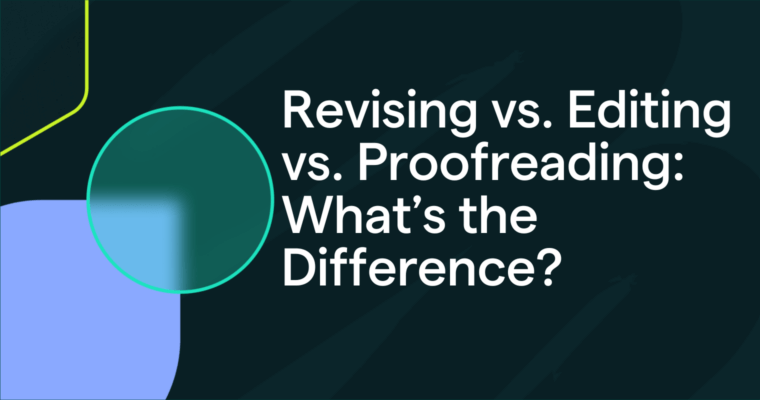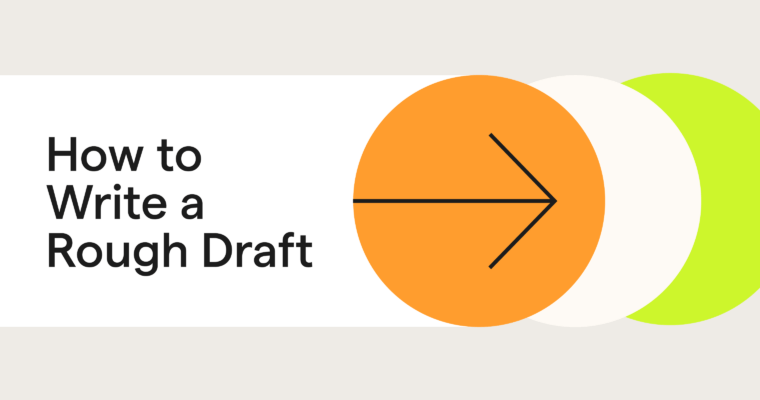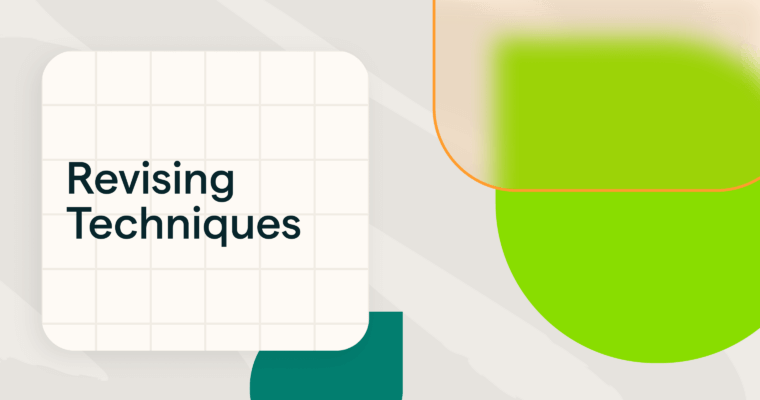
Writing a book can be exhilarating, but it can also be overwhelming. Whether you’re crafting a novel, a memoir, or a nonfiction book, starting with a clear outline can set you up for success. Think of it as a roadmap: It gives you direction, keeps you organized, and helps you maintain momentum through the writing process.
In this guide, we’ll walk you through everything you need to know about outlining a book. You’ll learn why outlines matter, explore different outlining styles and methods, and get a simple, step-by-step process to create your own outline.
Table of contents
Benefits of outlining your book
Tips for writing a strong book outline
Benefits of outlining your book
Outlining is an important step in the writing process. For some writers, it might feel like unnecessary extra work, but it can actually make the writing process much smoother. A well-structured outline gives you a clear path forward so you can focus on your creative expression.
Provides structure
- Organizes your ideas in a logical, easy-to-follow sequence
- Ensures your story or argument flows smoothly from beginning to end
- Helps identify gaps or weak points in your overall narrative early on
Helps you focus
- Keeps your writing aligned with your main themes and goals
- Prevents you from including irrelevant detail or veering off topic
- Makes it easier to maintain consistency in tone, pacing, and voice
Saves time
- Speeds up writing with a clear plan for what comes next
- Reduces the need for major changes during revisions
- Helps you schedule your writing more efficiently
Prevents writer’s block
- Provides a clear next step when you’re unsure what to write next
- Allows you to skip around to outlined sections if you get stuck
- Offers a visual indication of your progress
Do I need an outline?
Every writer approaches their craft differently. Some are meticulous planners, mapping out every component of their story, characters, setting, and theme before writing. These writers are sometimes called plotters—writers who plot out their writing. At the other end of the spectrum are the pantsers—writers who don’t plan their writing, preferring to discover the story as they write it. They “fly by the seat of their pants.”
Very few writers are entirely plotters or pantsers. Most fall somewhere in between. As you develop your writing skills, you’ll figure out the balance that works for you. Maybe you prefer writing only a detailed synopsis of your book before writing. Alternately, you may find that a detailed outline of your characters, plot, and themes works best for you.
Book outlining types
Effective outlines for your book can come in a variety of forms. The two most common outline types are linear and visual outlines. Experiment to figure out which works best for you.
- Linear outline: A sequential, hierarchical method of organizing your narrative using headings and subheadings. Often this takes the form of a bulleted or alphanumeric list.
- Visual outline: A method of organizing your narrative using images, icons, and lines to indicate relationships. Frequently, writers use a technique called mind mapping to build visual outlines.
Book outlining methods
There are a number of different outlining methods writers use for structuring their books. Each has strengths for different writing styles, genres, and story structures. Here are a few of the most popular.
The snowflake method
Developed by author Randy Ingermanson, this method starts with a one-sentence summary of your book. From there, you expand that idea into a paragraph, then into detailed character descriptions, scenes, and storylines.
It’s great for writers crafting complex plots or character-driven narratives.
The 3-act structure
The three-act structure is one of the most common story structures. It divides your narrative into three distinct sections:
- Setup: Introduces characters and the setting
- Confrontation: Develops a conflict and sets the stakes
- Resolution: Resolves the conflict and concludes the story
This method is a basic but effective strategy for building tension and making sure your narrative has a strong arc and satisfying conclusion.
The hero’s journey
Popularized by writer and scholar Joseph Campbell, the hero’s journey outlines a 12-step journey of transformation. Common in mythology, fantasy, and adventure stories, it follows a protagonist who overcomes trials and emerges changed.
The hero’s journey is ideal for quest-driven narratives or stories focused on a character’s growth.
The synopsis method
The synopsis method involves writing a short summary of your entire book before you begin drafting. This summary typically includes major plot points, character arcs, key themes, and the ending, all condensed into one to three pages.
It’s best for writers who find linear outlining challenging but still want a plan for their book.
How to outline your book in 7 steps
Before you begin your outline, decide on the outlining type and method or methods you’ll employ. You may want to experiment to determine which combination works best for you.
1 Define your book’s purpose
What are you trying to achieve with your book? For instance, you can inform, entertain, inspire, or persuade. Your purpose will help guide your voice, tone, and structure.
2 Identify your audience
Who are you writing for? What do they already know? What do they expect to learn or experience from your book? Getting specific about your audience helps you make sure your writing speaks directly to them.
3 Create your central idea or thesis
Summarize your book’s core idea in one or two sentences. For fiction, this might include your main character and their challenge. For nonfiction, it should outline the key argument or insight. Refer to this regularly to keep your outline aligned with this central idea.
4 Craft your story, character, or topic arc
For fiction, chart how your protagonist grows or changes. In nonfiction, think about how your topic unfolds and builds. This arc gives your book a compelling through line that keeps readers engaged.
5 Build your book’s structure
Using your chosen method, lay out the big-picture framework of your book. Focus on major beats like plot points, key scenes, or conflicts. Don’t include the fine details just yet. As you add more specifics, this framework will give you something to build on.
6 Add high-level details
Begin fleshing out each section with more context: scenes, character dynamics, emotions, examples, or facts. These elements will bring depth and continuity to your outline and help you visualize where your narrative is going.
7 Organize and refine your outline
Arrange your content into chapters or logical sections. Ensure a smooth flow and clear transitions from one section to the next. Aim for a structure that naturally builds toward a satisfying conclusion.
Tips for writing a strong book outline
Use these tips to get even more out of your book outlining process.
- Stay flexible: Whether you’re more of a plotter or a pantser, remember that your outline is a guide, not a recipe. Adjust and refine it as your ideas and writing evolve.
- Use tools to help: Tools like Scrivener and Milanote are built to help you organize and revise your ideas. Grammarly can generate a first-draft outline based on your ideas or notes if you need help getting started.
- Get feedback: Share your outline with a trusted friend or mentor. Outside perspectives can help you spot opportunities for improvement or unlock new ideas.
Conclusion
Outlining is one of the most powerful tools a writer can use to bring clarity, direction, and structure to a book. Even if you consider yourself a pantser, a little preplanning can make the writing process smoother and more productive.
Take the time to explore different methods, mix and match techniques, and customize your approach to suit your unique writing style. Remember: Your outline isn’t set in stone—it’s a flexible roadmap that helps you move forward with confidence.
Book outline FAQs
What is the best method for outlining a novel?
There’s no single best method. The snowflake method is great for detailed planners, while the three-act structure suits plot-driven writers. Try a few approaches to see what works best for you.
Can I outline a nonfiction book the same way as a novel?
Not exactly. Nonfiction outlines focus more on organizing information, while fiction outlines emphasize narrative flow and character development.
How long should a book outline be?
It should last as long as necessary. It should give you enough structure to stay on track while still leaving room for creativity.
Do I need to follow my outline exactly?
No. Think of your outline as a flexible guide. If your story or argument evolves, your outline can evolve with it.
What’s the easiest outlining tool for first-time authors?
Grammarly is user-friendly and great for beginners. Its AI can help you brainstorm, outline, draft, and revise your writing. It’s your writing partner through every stage of your writing process.






